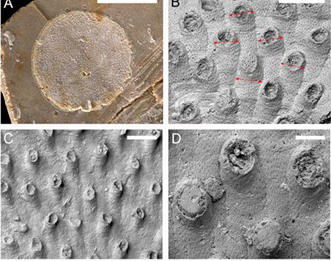
Body size evolution has long been a core topic in paleontological research. "Cope's Rule" describes the tendency for body size to increase during the evolution of many lineages. However, a new study focusing on bryozoans, a group of modular organisms, has uncovered a different evolutionary pattern.
Associate Prof. MA Junye from the Nanjing Institute of Geology and Paleontology of the Chinese Academy of Sciences (NIGPAS), and his collaborators found that Berenicea, a genus of cyclostome bryozoans, has experienced a continuous reduction in zooid size over the past 200 million years. This trend runs directly counter to Cope's Rule.
The findings were recently published in the journal Palaeontology.
By analyzing 200 Berenicea morphotype samples dating from the Late Triassic to the present, the research team documented a significant decline in maximum zooid width over time. This pattern stands in sharp contrast to the long-term stability of zooid size in cheilostome bryozoans, challenging the prior hypothesis that the two groups followed similar body size evolution trajectories.
To identify the driving factors, the researchers used multiple time-series models to test potential influences, including changes in oxygen levels, the origination rate of cheilostome bryozoans, and their proportion within ecological communities. Results showed that while oxygen levels and zooid size exhibit a statistical correlation, no causal relationship exists. Similarly, the rise of cheilostomes as dominant competitors for space did not directly trigger Berenicea's zooid size reduction.
Additionally, the study ruled out the potential impact of paleolatitude (and associated temperature) changes on zooid size, further emphasizing the intrinsic nature of this reduction trend. Model analysis revealed that the size reduction process was not constant: it underwent two major phase shifts, around 165–160 million years ago and 78 million years ago.
This study marks the first systematic documentation of zooid size reduction in cyclostome bryozoans over macroevolutionary timescales. The team suggests the trend may be linked to optimized metabolic efficiency or shifts in feeding niches, rather than being a direct response to external environmental pressures or interspecific competition.

Cyclostome bryozoans of the Berenicea morphotype. (Image by NIGPAS)

86-10-68597521 (day)
86-10-68597289 (night)

52 Sanlihe Rd., Xicheng District,
Beijing, China (100864)

